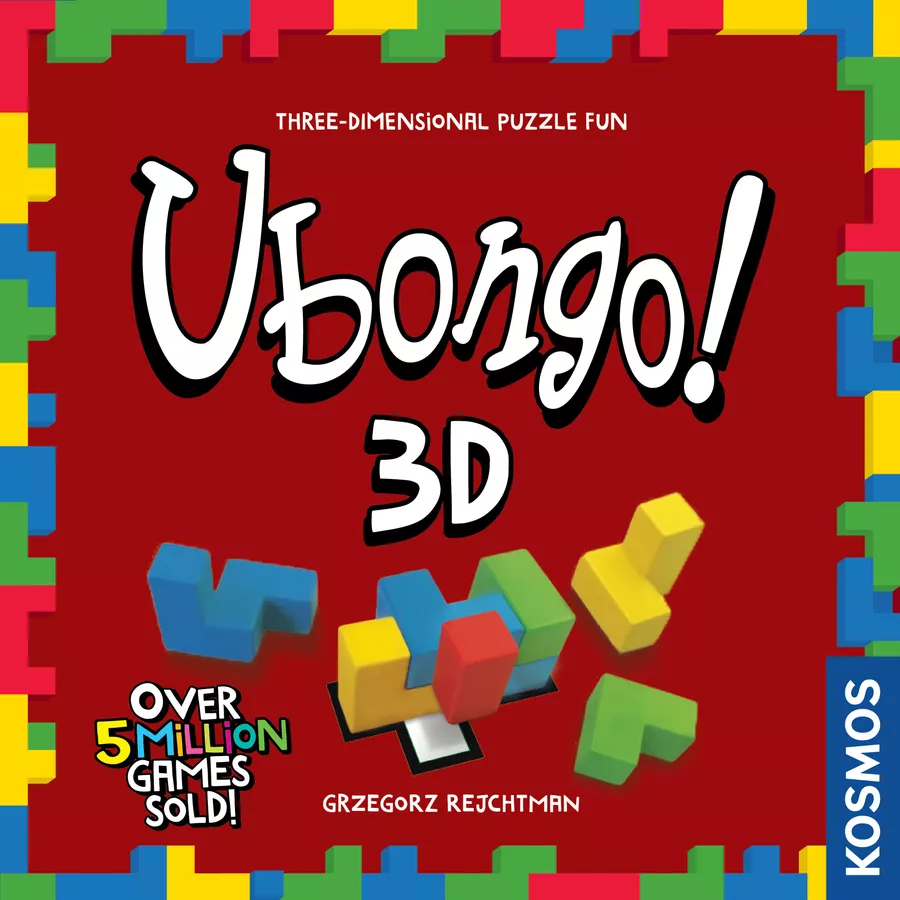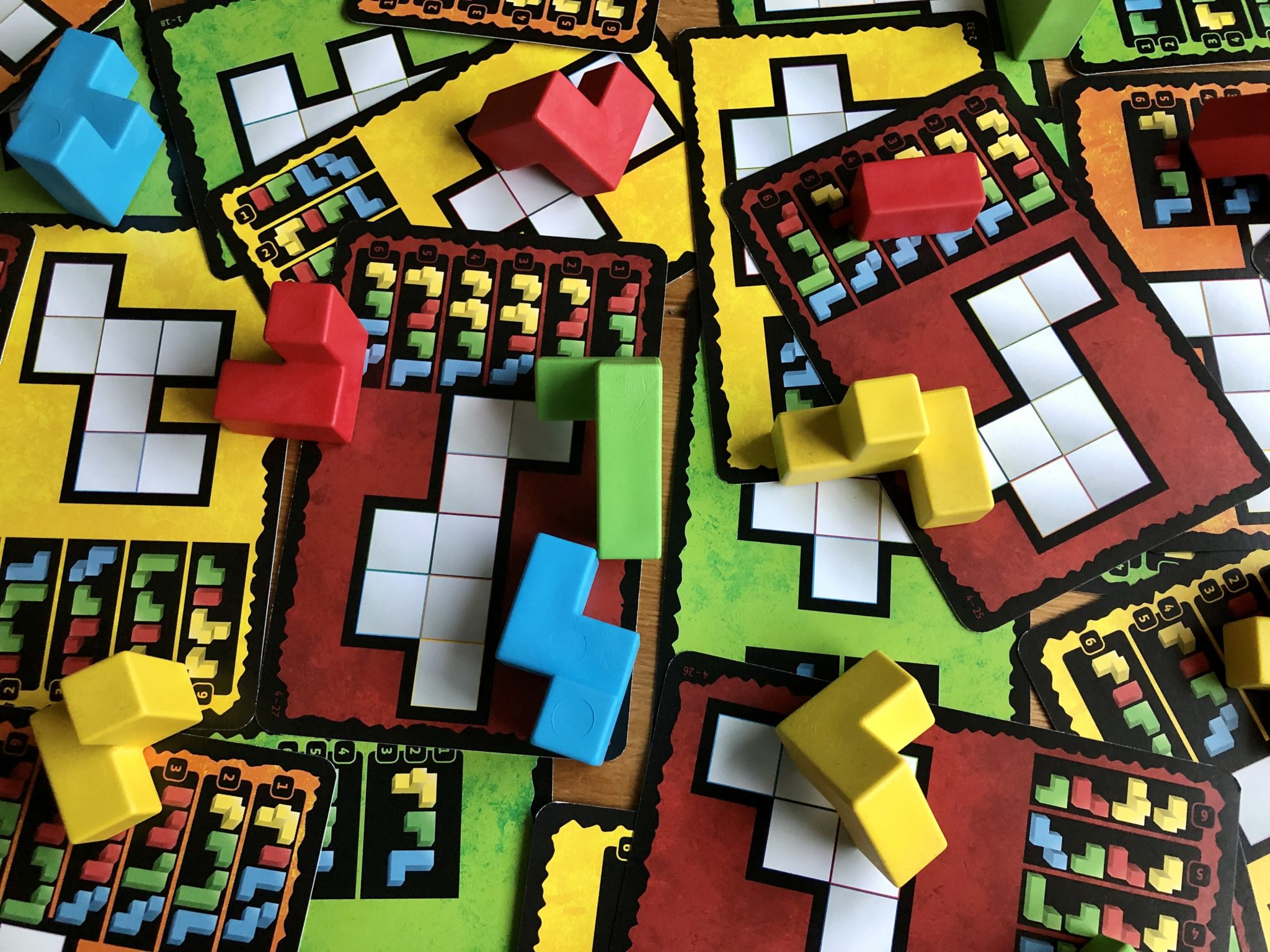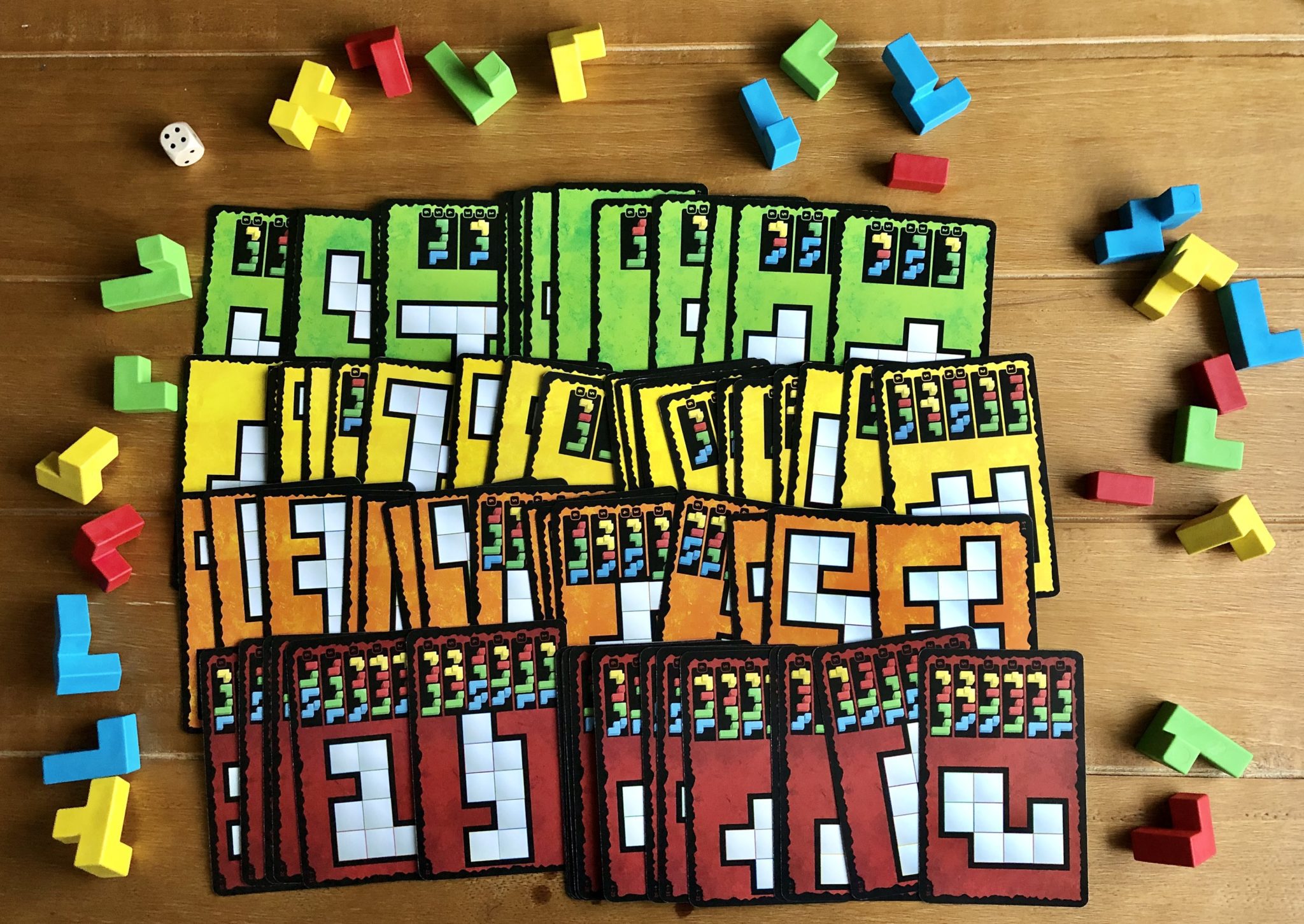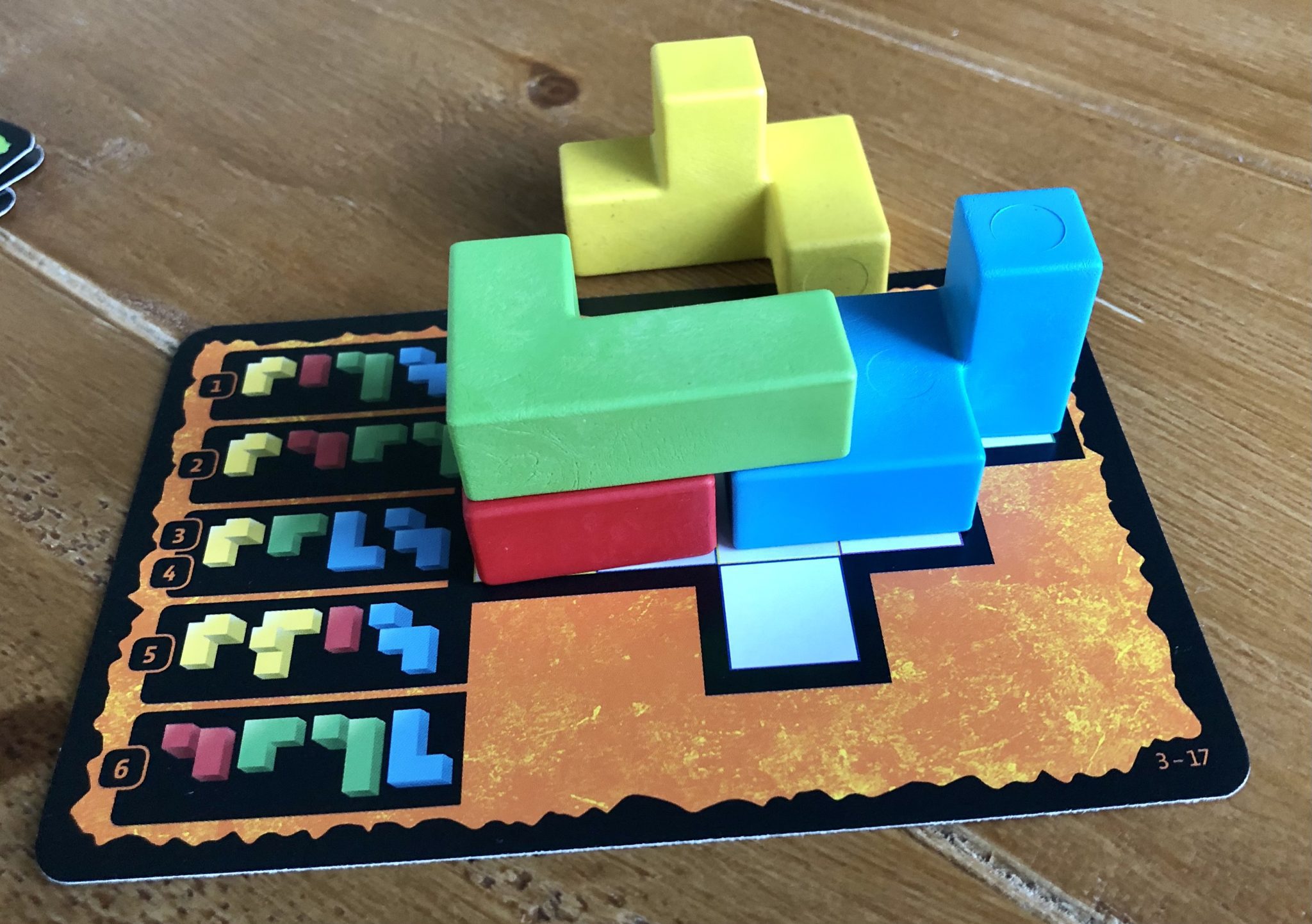Ubongo has multiple iterations, all surrounding the same goal: fulfilling puzzles. Ubongo first came out in 2003, but exploded with different iterations including Ubongo Extreme, Ubongo Duel, Ubongo Mini, Ubongo Junior, and Ubongo 3D. Kosmos has published all of these titles, and has created many educational games that are important for growth and development. Ubongo 3D takes similar puzzles and adds another layer to them, making them 3D. Now you will be taking blocks of different sizes and colors, orientating them to fit inside the designated shape and making a structure that is 2 blocks tall.
What’s in the Box?
- 72 double sided puzzle cards
- 32 different sized puzzle pieces
- 58 gems of various colors
- 1 cloth bag
- 1 die
- 1 hourglass
- 1 rulebook

How’s it Play?
Each player gets a set of 8 puzzles pieces of different sizes. Players will each take 9 puzzle cards to perform. There are 4 different difficulty levels. Green is the easiest at level 1, yellow is level 2, orange is level 3, and the hardest is red at level 4. Depending on player abilities, each player may choose different or same level cards to perform, but younger players should start with level 1, while older player can start with level 2, 3, or 4 depending on their abilities.
9 blue gems and 9 brown gems are taken from the supply and form rows to match the number of rounds (the game lasts 9 rounds). These gems form the gem display. Each gem is worth a different amount of points. Red are 4 points, blue 3 points, green 2 points, and brown is 1 point.

Each round will be timed using the hourglass. Everyone flips over their first card. The youngest player rolls the die, and the result determines the puzzles pieces each player will use to solve their puzzle. Everyone gets those pieces from their supply and separates them from all the others. The hourglass is then turned over and players try to solve their puzzle by placing their pieces on their card so they fit exactly within the black outline and on no more than 2 levels. There also can be no overhanging pieces. Once a player solves their puzzle they shout “Ubongo.”
All players continue to solve their puzzles until the hourglass runs out. As soon as someone notices the hourglass has run out, they shout “stop.” All players then need to immediately stop. If the hourglass runs out and no players have completed their tasks, there is a second chance round where the hourglass is flipped back over and players have another chance to complete their puzzles.

After the round ends, players will receive their rewards depending on how they performed their puzzle. The fastest player to finish, the player who yelled “Ubongo,” takes one blue gem from the gem display and also randomly takes one gem from the bag. The second fastest player receives one brown gem from the gem display and randomly takes a gem from the gem bag. All other players who finish their puzzle get to draw one gem out of the gem bag for their reward. Players who don’t finish won’t gain any gems that round.
Players continue playing a round and each blue and brown gem in the gem display will also track the rounds. Players will take a new puzzle card each round to perform. At the end of 9 rounds the gem display should be empty, and the game ends. Each player will count their points according to their gems, and the player with the most points wins the game.
Ubongo 3D can also be played solo by doing the puzzles as fast as you can within your own time limit.

The Verdict
Ubongo 3D is exactly what it is, a puzzle game that challenges your spatial awareness. It’s also a step up from its other variants, both because the puzzles pieces are more intricate and the fact you are trying to accomplish a 2 tier puzzle without overhanging your pieces outside the black lines. The puzzles are also more challenging than you might think. Some of the green puzzles took me longer than I would have thought to accomplish, and they are the easiest. Once I figured out some of the tricks and trained my brain a little, the green became easy and I proceeded with the others. The red puzzle cards still took a little longer, but again, it’s a matter of figuring out the tricks necessary.

As you play this game, you’ll begin to find the patter in how some of the pieces are placed to complete the puzzle. The pieces can not be placed 3 high, so the longer pieces can’t be placed in as many directions anyway, and in order to fit within the black lines, you can only orientate them a couple ways. I found that I had better success when I placed the bigger pieces first and ended with the smaller pieces that are easier to visualize.
The game is fun to play. There is no player interaction, but I didn’t mind that, as you are solely focusing on your own card with your own pieces from round to round. The rounds seemed fairly fast with the timer. When the first player finished, I didn’t feel like there was a lot of time wasted waiting for others to finish as well. I like the second chance rule, as the first couple rounds can be tricky with new players as they train their minds to these pieces. 9 rounds also seemed just right, any more would feel like the game would drag on, and fewer would feel like the player who didn’t have a great start could never catch up.

The scorings done right, too. I like how the first player to finish is rewarded with a 4 point gem, and second place gets an automatic 1 point gem. Then whoever finishes their puzzle gets a random pick from the bag. This can be very luck based, but I feel like it goes well with this game. You don’t have to be the first to finish every time to win the game, but you probably need to compete somewhere being the first to finish in some rounds. This also lets the slower players have a chance to catch up if they get a good draw from the bag. I wish there was a way to let the players who don’t finish have an extra 10 seconds on the next round or so because when you gain no points in a round, it does hurt your chances of winning the game.
The components are great; the blocks are all painted well and have a different shape or orientation for each. The gems are always fun for kids to use as points, and the excitement to grab something from the bag is great for the game. The puzzle cards are normal cards. (In the rules they call them boards, and that bothers me a little because they are cards.)
We enjoyed this game, and for our kids who are homeschooled, they need to learn spatial recognition and spatial awareness. This game was a great way to spend time with them doing this. It pretty much tricked them into learning, as they felt like it was ‘just’ a game and they didn’t even know they were “doing school.”
Images Courtesy of Kosmos Games
Have strong thoughts about this piece you need to share? Or maybe there’s something else on your mind you’re wanting to talk about with fellow Fandomentals? Head on over to our Community server to join in the conversation!





